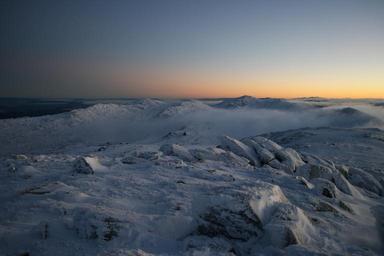Introduction
In the realm of photography, shadows play a crucial yet often overlooked role in shaping narratives and evoking emotions. The interplay between light and shadow creates an atmospheric depth that transcends mere representation; it invites viewers into a mysterious world filled with intriguing stories waiting to be unveiled. This article explores how shadows contribute to visual storytelling, dissecting their impact on mood, character development, and overall composition.
Understanding the Liminal World in Photography
What is the Liminal World?
The term "liminal" refers to transitional or threshold spaces that exist between two states or realms. In photography, the liminal world conjures images of places caught between reality and dreams, familiar yet strangely unsettling. It’s within these spaces—whether they be shadowy alleys or enchanting forests—that photographers can explore themes of mystery and introspection.
The Role of Liminal Spaces
- Eloquent Ambiguity: Liminal spaces often evoke feelings of nostalgia and unease, encouraging viewers to reflect on their own experiences. Transitional Moments: Photographs capturing these thresholds can narrate tales of change, growth, or decay.
Incorporating these elements into your photography can transform ordinary scenes into portals of exploration.
The Aesthetic Appeal of Liminal Worlds
Liminal worlds capture our imagination through their unique aesthetics. Shadows create depth and texture, adding layers to compositions that invite contemplation.
- Murky Tones in Photography: These tones enhance the sense of mystery while maintaining an earthy feel. Wet Textures in Photography: Reflections and wet surfaces amplify this ambiance by introducing an element of unpredictability.
Photographers can experiment with various techniques—like shooting during twilight hours—to accentuate these attributes.
Tunnel Photography: Exploring the Depths
The Allure of Tunnels in Visual Storytelling
Tunnels serve as powerful symbols in visual storytelling. They represent journeys—both physical and metaphorical—inviting viewers to consider what lies beyond their confines.
Techniques for Capturing Tunnel Scenes
- Round Tunnel in Photography: Utilizing circular tunnels enhances focus on the subject while creating a dynamic composition. Backlit Subject in Photography: Positioning your subject against light sources within tunnels adds drama and intrigue.
Evoking Emotion Through Tunnel Imagery
The enclosed nature of tunnels can evoke feelings of isolation or confinement. Using shadows strategically can amplify these emotions:
- Solitary Figure in Photography: A lone figure emerging from shadows resonates deeply with themes like loneliness or existential reflection. Atmospheric Portraits: Capturing subjects amidst tunnel shadows creates an ethereal atmosphere that enriches storytelling.
Self-Portrait in Photography: A Personal Journey Through Shadows
The Introspection Behind Self-Portraits
Self-portraits allow photographers to engage intimately with their subjects—themselves. Shadows become https://telegra.ph/Earthly-Hues-and-Their-Connection-to-Place-12-11 tools for self-exploration, reflecting inner thoughts and emotions.

Techniques for Creating Compelling Self-Portraits
- Character in Shadow in Photography: Emphasizing shadowed areas can create a more profound narrative surrounding self-discovery. Long Coat in Photography: Wearing flowing garments adds dynamism to compositions while enhancing a sense of mystery.
Navigating Personal Themes Through Shadows
Shadows provide context for personal exploration. By incorporating elements like hidden spaces or reflective puddles, photographers can signify transitions or struggles within themselves.
Murky Tones and Earthly Hues: Creating Mood
The Importance of Color Palette
Color choices significantly influence mood and storytelling depth. Murky tones coupled with earthy hues establish rich atmospheres that resonate emotionally with viewers.
Techniques for Crafting Mood Through Color
- Utilizing muted colors helps maintain focus on the subject while allowing shadows to emerge organically within compositions.
Balancing Light and Dark Elements
Achieving harmony between light and dark creates tension essential for impactful imagery:
- Subtle Contrast in Photography: This technique emphasizes both shadows and highlights without overwhelming the viewer.
Urban Decay: Capturing Forgotten Spaces
The Beauty Within Urban Decay
Urban decay offers a wealth of opportunities for visual storytelling through shadow play. Abandoned buildings reveal layers of history enriched through time's passage.
Techniques for Photographing Urban Decay
Explore forgotten spaces where natural light filters through gaps:- Use dark walls as backdrops highlighting aged surfaces. Incorporate wet ground reflections to add complexity.
- Look for urban landscapes during twilight hours when atmospheric conditions heighten emotional resonance.
- Capture fragmented imagery juxtaposing decaying structures against vibrant street art; this contrast tells stories about resilience amid deterioration.
Mystery in Photography: Layering Narratives Through Shadows
Crafting Enigmatic Scenes
Creating an air of mystery involves skillful manipulation of light and shadow:
- Concealment within frames prompts questions; who is hidden? What story remains untold?
Techniques for Adding Mystery
Utilize backlighting to cast figures into obscurity:- This method enhances intrigue around subjects while allowing playful experimentation with silhouettes.
- Documenting subtle interactions between characters encourages contemplative viewing experiences—viewers enter unknown realms alongside you!
Contemplative Spaces: Creating Introspective Atmospheres
The Power of Reflection
Capturing contemplative spaces invites viewers into personal narratives where they reflect alongside subjects:
Techniques for Establishing Introspective Moods
Use reflective puddles strategically positioned within frame compositions:- These elements introduce additional layers enhancing both depth perception & thematic exploration (e.g., hidden journeys).
- Silence speaks volumes; it evokes emotional resonance allowing viewers space for introspection amidst captivating visuals!
Shadowy Reflections: A Study in Contrasts
Understanding Reflective Surfaces
Reflective surfaces enhance shadow play by creating duplicates—or echoes—of images captured:
Techniques for Harnessing Shadowy Reflections
Seek out environments featuring water bodies:- Wet textures offer unparalleled opportunities (e.g., urban settings after rain) enabling dynamic interplay between elements within frames!
- Dramatic shifts invite fresh perspectives revealing unseen worlds beneath surface-level interpretations!
FAQs About Mystery and Mood in Visual Storytelling
Q1: How can I effectively use shadows in my photography?
A1: To utilize shadows effectively, experiment with lighting conditions, angles, and contrasting elements such as backlighting or reflective surfaces to enhance mood and narrative depth.
Q2: What are some common themes depicted through shadow play?
A2: Common themes include isolation, introspection, transition, urban decay, mystery, identity exploration, existential reflection among others—all enhanced by strategic use of shadows within compositions!
Q3: How do colors affect the mood conveyed by photographs?
A3: Colors evoke emotions; murky tones paired with earthy hues create rich atmospheres that resonate deeply with audiences while establishing connections between subjects & surroundings!
Q4: Can urban decay be photographed without losing aesthetic value?
A4: Absolutely! Urban decay embodies haunting beauty captured through thoughtful framing techniques highlighting contrasts—this approach celebrates resilience amid deterioration rather than diminishing aesthetic appeal!
Q5: What role does self-portraiture play regarding narrative development?
A5: Self-portraiture fosters intimate engagement between photographer & subject (themselves), enabling deeper explorations into personal journeys enhanced by emotional resonances conveyed through shadow dynamics!

Q6: Why are liminal spaces significant in photography?

Conclusion
The power of shadows extends far beyond mere absence of light; it weaves intricate narratives filled with emotion—a dance between presence & absence illuminating human experience beautifully! From exploring liminal worlds adorned by murky tones & wet textures—to capturing enigmatic figures emerging from dark walls—we're reminded how vital these components are when crafting evocative visual stories steeped mystique! So next time you pick up your camera… remember it’s not just about what’s seen but also what lies hidden within depths waiting patiently unveil secrets whisper softly across every frame!